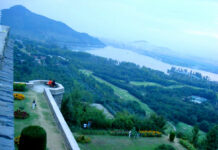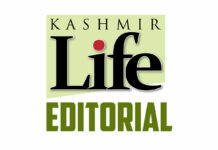G
iven the situation that emerged in Kashmir after the rigged assembly elections in 1987, thousands of residents are living on the other side of the divide. They are either the youth who had gone to receive arms training or the families living on the LoC who fled when the ‘borders’ were literally depopulated.
Post 9/11 scenario witnessed shifting priorities on either side of the Redcliff divide. Gradually, Islamabad’s started reconsidering its support to the radical groups and a change was also felt on this side as well. This change manifested itself with the campaign by unionists that the youth trapped on the other side should be encouraged to return and let them live a peaceful life. After a lot of dithering, the policy that dictated the mechanism and methods to check the ‘change in heart’ of the intending returnees was approved.
Though a trickle of youth started their return as the first announcement was made, it was discouraged for ‘security’ reasons. Now, when the policy is in vogue, no youth has used the path they were supposed to as per the policy. But the larger story is they are returning home. In most cases, they are returning with their families they raised within and outside the refugee camps. There are females from Karachi, Lahore and other modern addresses that Pakistan has.
Almost all these families returned taking the Islamabad-Nepal-UP road, partly by air and partly by road. Before crossing into India, they usually destroy the documents that could establish their identity. This is more chaotic for the females and the children who lack a state subject. Once in India, they lost their identity.
Back home, they face problems of two types. After passing through various stages of verification, and de-briefing, the males have a serious crisis of actually getting livelihoods. Their children are suffering for the want of proper schooling. In certain cases, most promising children are still trying to get into classrooms for one or the other reasons. The most painful story is about the women for whom the culture is different if not alien. The economic hardships and crisis in communicating with their families on the other side is yet another dimension.
While getting youth back and accepting their families could offer a lot of brownie points in the cold war that the two countries have been fighting ever since they were born, it is the future of a new generation that is at stake. If the option of rehabilitating them is a difficult one, the policy may not be required at all. At the same time, however, the society needs to play its role especially when there are cases where these returnees are battling for their lost inheritance.









